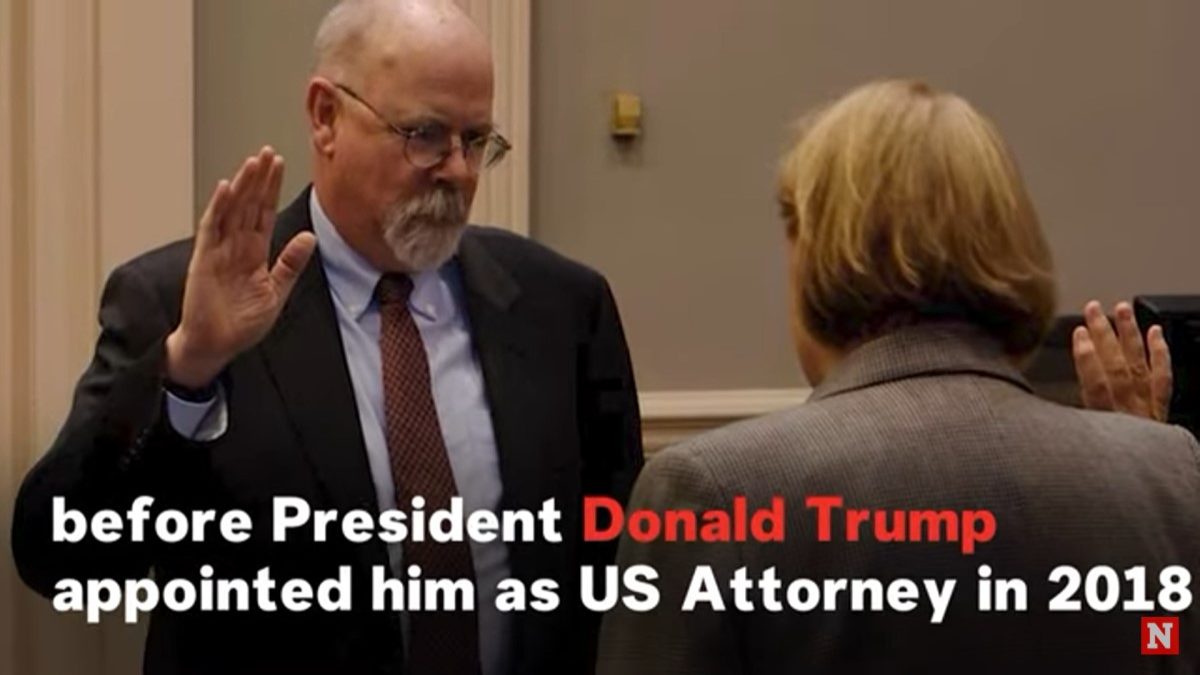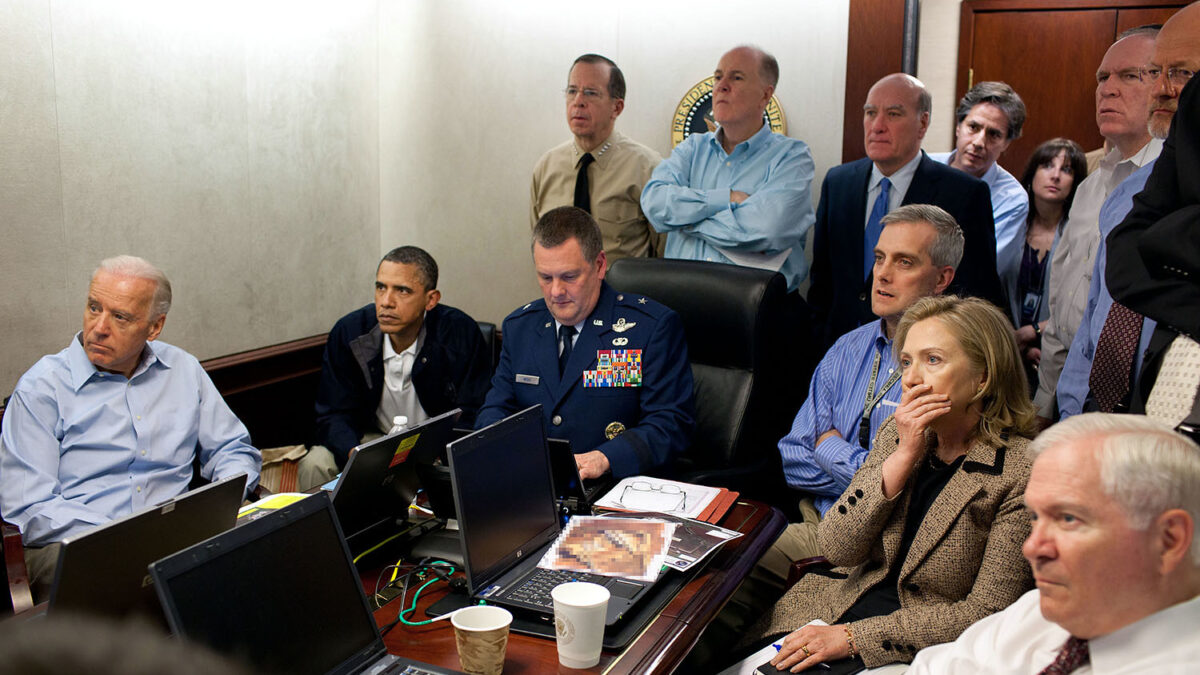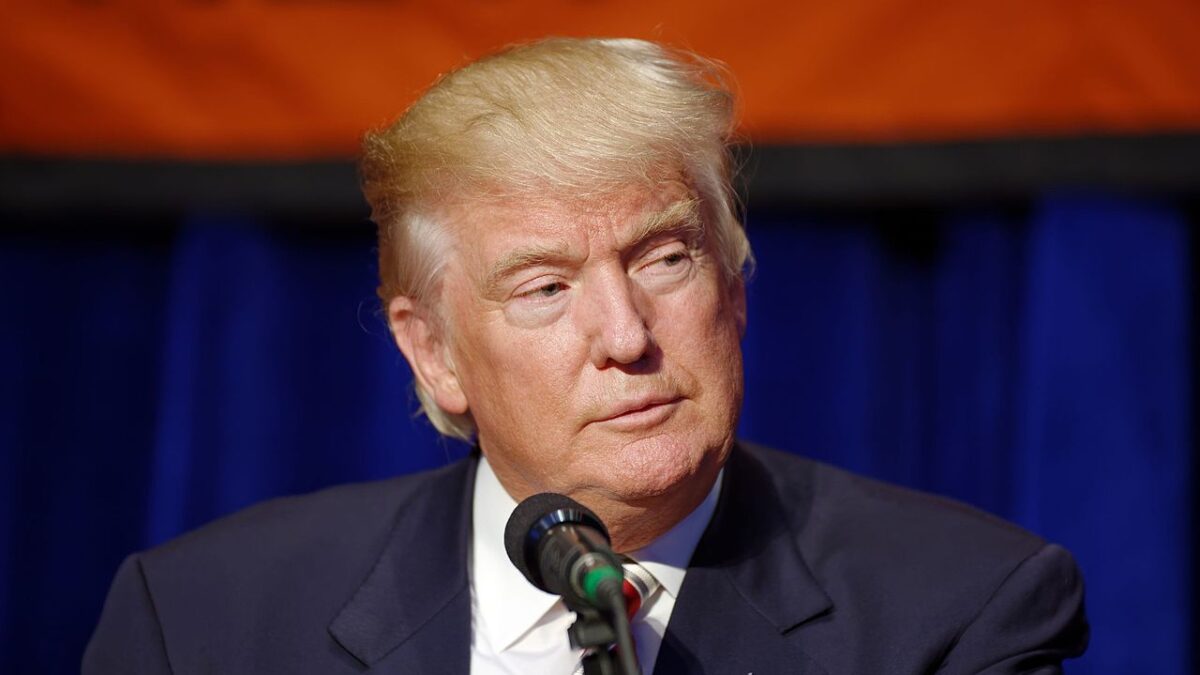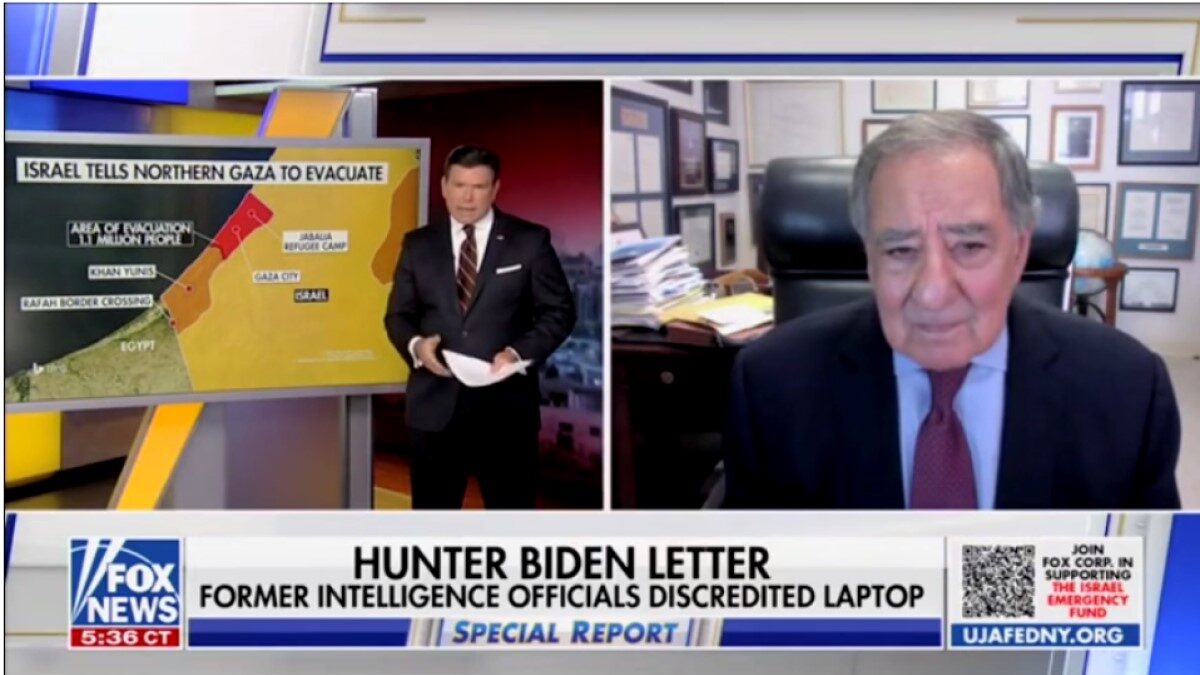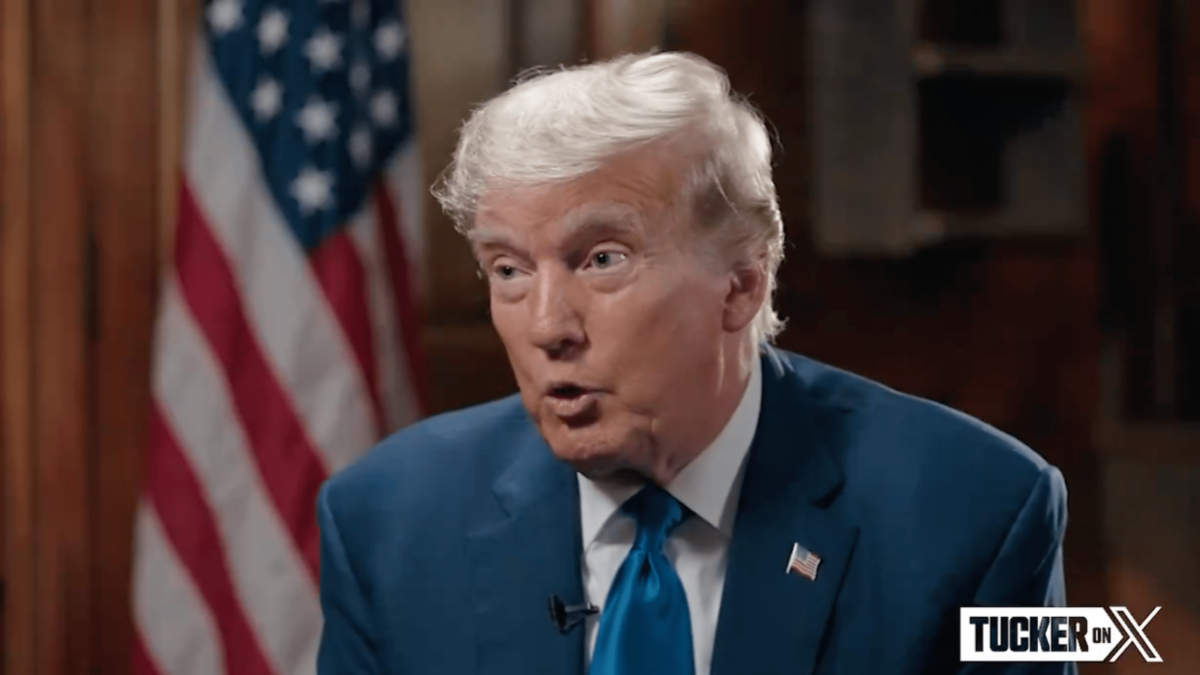On Jan. 25, Special Counsel John Durham filed a “discovery update” and a request for an extension of time to provide Michael Sussmann documents related to the government’s pending criminal case against the former Hillary Clinton campaign lawyer.
The 19-page court filing reveals some fascinating details about the Sussmann case, the broader special counsel investigation, and most intriguingly an apparent rift between Durham’s team and the Office of Inspector General. Here’s a quick refresher of the case, followed by five takeaways.
What’s Happened So Far
On September 16, 2021, the special counsel’s office filed a one-count indictment against Sussmann, who served as a lawyer for the Clinton campaign during the 2016 election. The indictment charged that Sussmann had lied to FBI General Counsel James Baker when he provided him information that purported to show the Trump organization had established a secret channel to communicate with a Russian bank, Alfa Bank.
Specifically, according to the indictment, “Sussmann lied about the capacity in which he was providing the allegations to the FBI,” with Sussmann falsely stating “he was not doing his work on the aforementioned allegations ‘for any client.’” In fact, though, the indictment charged, Sussmann was acting on behalf of “a U.S. technology industry executive at a U.S. Internet company”—later identified as Rodney Joffe—and “the Hillary Clinton Presidential Campaign.”
Before the 2016 election, the Clinton team also pushed claims to the press of a Trump-Alfa Bank covert communication channel, with Slate publishing a detailed story on this conspiracy theory the week before the election. The FBI later concluded there was nothing to the story and then turned its attention to claims of a broader Trump-Russia collusion for the next three years.
But by May 2019, the investigators had become the investigated, with then-Attorney General William Barr directing Durham “to investigate certain intelligence and law-enforcement activities surrounding the 2016 presidential election.” Prior to the 2020 election, Barr appointed Durham as a special counsel, and for the last year-and-a-half he has continued in that role, albeit with little fanfare.
1. There’s Much More to Come
In fact, Sussmann represents only the third individual charged as a result of Durham’s probe. In August 2020, FBI lawyer Kevin Clinesmith pleaded guilty to altering an email to push forward the FISA surveillance application against Carter Page. On November 4, 2021, Durham charged Igor Danchenko, Christopher Steele’s primary sub-source, with five counts of lying to the FBI.
Now, with Monday’s filing in the Sussmann case, there is reason to believe more is to come—much more. And that’s the first take-away.
2. Criminal Investigation of Sussmann Afoot
There is an “active, ongoing criminal investigation” of Sussmann’s conduct.
After news broke of the indictment against Sussmann, the left quickly spun the charge as a big nothing-burger. “Is that all John Durham Has?,” more than one commentary asked.
Of course the indictment of Danchenko a little over a month later proved that wasn’t the case, but even before Durham charged Danchenko, the media should have known more was to come. After all, when the special counsel’s office charged Sussmann, it should have been clear from Durham’s timing that he was trying to outrun the clock on the five-year statute of limitations: With Sussmann’s alleged lie to Baker occurring on September 19, 2016, the special counsel team had to file the indictment when it did to prevent the charge from being time-barred.
That Durham was not done seemed clear from the 27-page speaking indictment that, among other details, revealed that in crafting the Trump-Alfa Bank narrative, computer researchers working with Joffee “accessed ‘data of an Executive Branch office of the U.S. government,’ which ‘Internet Company-I had come to possess as a sub-contractor in a sensitive relationship between the U.S. government and another company.’”
And while Danchenko’s indictment makes clear the special counsel’s office was not done in general, yesterday’s filing by the special counsel suggests he isn’t even done with Sussmann.
“The Government also maintains an active, ongoing criminal investigation of the defendant’s conduct and other matters,” Monday’s court filing explained on its opening page. Special Counsel Durham’s office repeated that point two more times, adding more texture in the third instance: “In addition, the Special Counsel’s office maintains an active, ongoing criminal investigation of these and other matters that is not limited to the offense charged in the Indictment.”
So, no, this offense is not all Durham has, either in general, or potentially related to Sussmann.
3. Marc Elias Called Before the Grand Jury
Another significant revelation from yesterday’s court filing concerned Sussmann’s Perkins Coie colleague, Marc Elias, the top lawyer for the Hillary Clinton campaign.
Elias, identified in the Sussmann indictment and the government’s discovery update as “Campaign Lawyer-1,” provided sworn grand jury testimony, according to the special counsel’s office. That revelation proves significant given that Elias served as an attorney for the Clinton campaign and thus attorney-client privilege would generally protect communications related to the legal work performed.
However, as the attorney known by the moniker Techno Fog noted, “the fact that Marc Elias, the DNC/Clinton lawyer, was before a grand jury. . . indicates Durham has used the ‘crime-fraud exception’ to compel disclosure of information and to elicit testimony.”
The crime-fraud exception provides that communications are not protected by attorney-client privilege if a client seeks advice from an attorney to plan or commit a crime. If Durham did successfully use the crime-fraud exception to question Elias or force the production of documents, that would be a huge development, especially given Elias’s role in hiring Fusion GPS, which hired Steele.
But there’s much more than Marc.
4. Many Others Called Before Grand Jury
Elias was not the only one called before the grand jury, as Durham’s team laid out in Monday’s filing in an effort to obtain an extension to the discovery deadline.
In addition to Elias, the grand jury heard sworn testimony from James Baker; Bill Priestap; the assistant director of the FBI’s counterintelligence division; a former FBI deputy assistant director for counterintelligence; an FBI special agent; an FBI headquarters supervisory special agent; two CIA employees; two employees of Georgia Tech; and a former employee of one of the internet companies identified in the indictment.
Also significant was the list of individuals or companies served with grand jury subpoenas for documents, which included the Clinton campaign; “a political organization,” likely the Democratic National Committee; Perkins Coie; three internet companies connected to Joffe; Georgia Tech; Fusion GPS; and “a public relations firm that advised [Perkins Coie] concerning public statements issued in 2018 about the [Sussmann’s] meeting with the former FBI General Counsel.”
The full list of materials provided to Sussmann’s legal team added additional insights into the breadth of the special counsel’s investigation, including the fact that Durham’s team conducted at least 94 interviews. In addition to Baker and Priestap, Durham’s team interviewed more than 24 other current or former FBI employees, numerous CIA employees, a dozen employees at various internet companies connected to Joffe, as well as an employee of Joffe’s, the former chairman of Perkins Coie, a former employee of the Clinton campaign, and four current and former employees of Georgia Tech.
Likewise interesting is that the special counsel’s office turned over to Sussmann 12 transcripts of interviews conducted by the DOJ’s Office of Inspector General in connection with the OIG’s investigation of Crossfire Hurricane. That Durham had these documents suggests the special counsel’s office is reviewing what the OIG compiled as part of its own investigation.
A final tidbit of note: The special counsel’s office provided Sussmann nearly 400 emails its team had retrieved from the FBI’s holdings that were sent to, received from, or copied to Sussmann’s Perkins Coie email address from January of 2016 through June of 2017. That’s a lot of email messages: To whom at the FBI was Sussmann communicating during that time period, and about what?
5. The Court of Public Opinion
In addition to detailing all of the information the special counsel’s office had already provided Sussmann or would shortly, in requesting an extension to finish discovery, Durham’s team stressed the breadth of Sussmann’s discovery demands and the transparency with which those demands were met.
For instance, Sussmann’s attorneys requested “all of the prosecution team’s communications with counsel for witnesses or subjects in this investigation, including, ‘any records reflecting any consideration, concern, or threats from your office relating to those individuals’ or their counsels’ conduct…and all formal or informal complaints received by you or others’ about the conduct of the Special Counsel’s office.”
After noting that “communications with other counsel are rarely discoverable,” the government said it expects to produce responsive documents later this week. But the special counsel office added, “it is doing so despite the fact that certain counsel persistently have targeted prosecutors and investigators on the Special Counsel’s team with baseless and polemical attacks that unfairly malign and mischaracterize the conduct of this investigation.”
For instance, “certain counsel have falsely accused the Special Counsel’s Office of leaking information to the media and have mischaracterized efforts to warn witnesses of the consequences of false testimony or false statements as ‘threats’ or ‘intimidation,’” Durham explained to the court.
In other words, with Sussmann’s lawyers soon to receive this cache of complaints against Durham’s team, watch for the corrupt media to be quoting those false charges by this weekend, spinning a narrative of a corrupt special counsel’s office.
6. Wait! WHAT?
Near the end of the special counsel’s 19-page discovery update and extension request came the fifth takeaway: something strange is going on in the Office of Inspector General.
According to yesterday’s filing, on December 17, 2021, the OIG provided the special counsel’s office a written forensic report concerning a “cyber-related matter” that Sussmann had told an OIG special agent in charge about. Specifically, in early 2017, Sussmann told the OIG agent that one of his “clients had observed that a specific OIG employee’s computer was ‘seen publicly’ in ‘Internet traffic’ and was connecting to a Virtual Private Network in a foreign country.”
When the OIG office provided Durham’s team the “forensic report,” it represented “that it had ‘no other file[] or other documentation’ relating to this cyber matter.”
However, one week ago, Sussmann’s attorneys informed Durham’s team that Sussmann had, in fact, personally met with the DOJ’s inspector general in March 2017, when he passed on the tip about the OIG employee’s connection to a foreign VPN. While Sussmann had not told the OIG his client’s name at the time, last week his lawyers informed Durham’s team that it was Tech Executive-1, i.e., Joffe, who had discovered the OIG employee’s computer connecting to a VPN in a foreign country.
Upon learning this news, Durham’s team promptly contacted the OIG again and learned, for the first time, that Sussmann had met with both the inspector general and his then-general counsel in March 2017 about the above-described cyber matter. Since then, including over this last weekend, the OIG has been providing further documentation related to that meeting to the special counsel’s office.
So many questions! First, why did the OIG not inform the special counsel’s office that Sussmann had met with both the inspector general and his then-general counsel? And why did the OIG falsely represent that there was no “further documentation”? Sure, it could have been accidental, but given that Durham’s attorneys publicly exposed this “mistake,” it suggests something more is afoot.
Then there is the question of the veracity of the claim and what happens to the investigation. Was there really an OIG employee connecting on a foreign VPN? Who was it? Why? Did the OIG ever find out?
What about Joffe: How in the world did he discover the OIG employee’s computer connecting to a VPN in a foreign country? Was Joffe monitoring other government computers? How? Why? Was anyone else involved? Who knew?
These questions seem significant given that Sussmann’s meeting with the OIG occurred in March 2017, putting the “discovery” during the Trump administration and ongoing Crossfire Hurricane investigation. With questions like these just arising now, no wonder Durham isn’t done yet with his investigation.
